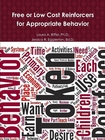We will take you through a variety of topics that have been deemed evidence-based for classroom management. The basic research has been completed, this presentation will take learners through specific examples of what these basic categories really look like and sound like when implemented in the classroom.
If you would like to purchase the book, you can click the picture of the book and it will take you to a publishing company to purchase the bound book. If you book Behavior Doctor Seminars, you will receive a pdf file of the booklet to print for your audience.
This book is designed to correspond to a Behavior Doctor Seminars presentation. It is a workbook format and will have the participants leaving with a plan for implementing specific plans of action in the classroom. We begin with lesson planning for low-level behaviors like out of seat, off task, and blurting. We then progress to the ten rules of behavior and how they apply to all the topics. Dr. Riffel shares personal stories with real interventions that have proven effective from research to practice.
We will discuss the research on seating arrangement and why we should never be more than two steps from any student. We will also discuss the five senses and how they can be distractors in the classroom. Each sense will have an intervention that is easy to implement in the classroom.
In Chapter Two, we will dabble with PBIS expectations and further this discussion in Chapter Six. Educators will begin a matrix of expectations for their classroom or school. Once the expectations are set, we will focus on behavior specific praise and why this is important and how to keep it going after the beginning of the school term.
In Chapter Three, we will focus on actively engaging students. Participants will get to try out some new every pupil response (EPR) strategies. These are fun and have instant results onscreen with a data mining system that saves the student data for the educator. These tools are free. Dr. Riffel will give examples for elementary and secondary. We will discuss Maslow vs. Bloom and learn how to build relationships with students. Dr. Riffel will share a technique guaranteed to decrease classroom disruptions by 45-72%.
We will also focus on teaching students how to self-regulate. There will be examples for elementary and secondary. We will also touch on video modeling and video self-modeling as a technique for changing behaviors.
In Chapter Four, we will look at a continuum of strategies for acknowledging appropriate behavior. We will talk about cueing techniques, contingent praise, group contingency- group reinforcement, with examples. We will discuss the research on what students really want to earn for good behavior. This is all based on the book “The Five Languages of Appreciation (Chapman & White, 2012). Drs. Riffel and Eggleston have been interviewing students since 2004 on what they find reinforcing. She will share a link to a free book with 75 pages of free reinforcers. We will end chapter four with a behavior rating sheet that is different from the typical. Based on John Hattie’s research (2009), we have added an extra component to get students to measure their own success.
Chapter Five will focus on strategies to stop behavior once it starts. We will discuss performance feedback, error corrections, response cost, differential reinforcement, planned ignoring, and finally time out from reinforcement.
Chapter Six will go deeper into the PBIS structure at the universal, targeted, and intensive levels. Dr. Riffel has written a bulleted “to-do” list for schools wanting to implement PBIS at the schoolwide level. This can also be implemented at the classroom level.
Chapter Seven will give a cursory look at Applied Behavior Analysis (ABA) and understand the competing behavior pathway. Dr. Riffel and Dr. Eggleston have simplified the pathway to show the three items that must be included in a proper intervention: 1) Revision of the Environment, 2) Replacement of the Behavior, and 3) Reframing of the Response. In order to know what to put in these three components, we must know the summary statement which includes the trigger, target behavior, and impacT of the behavior. We call this the Triple T- Triple R chart.


